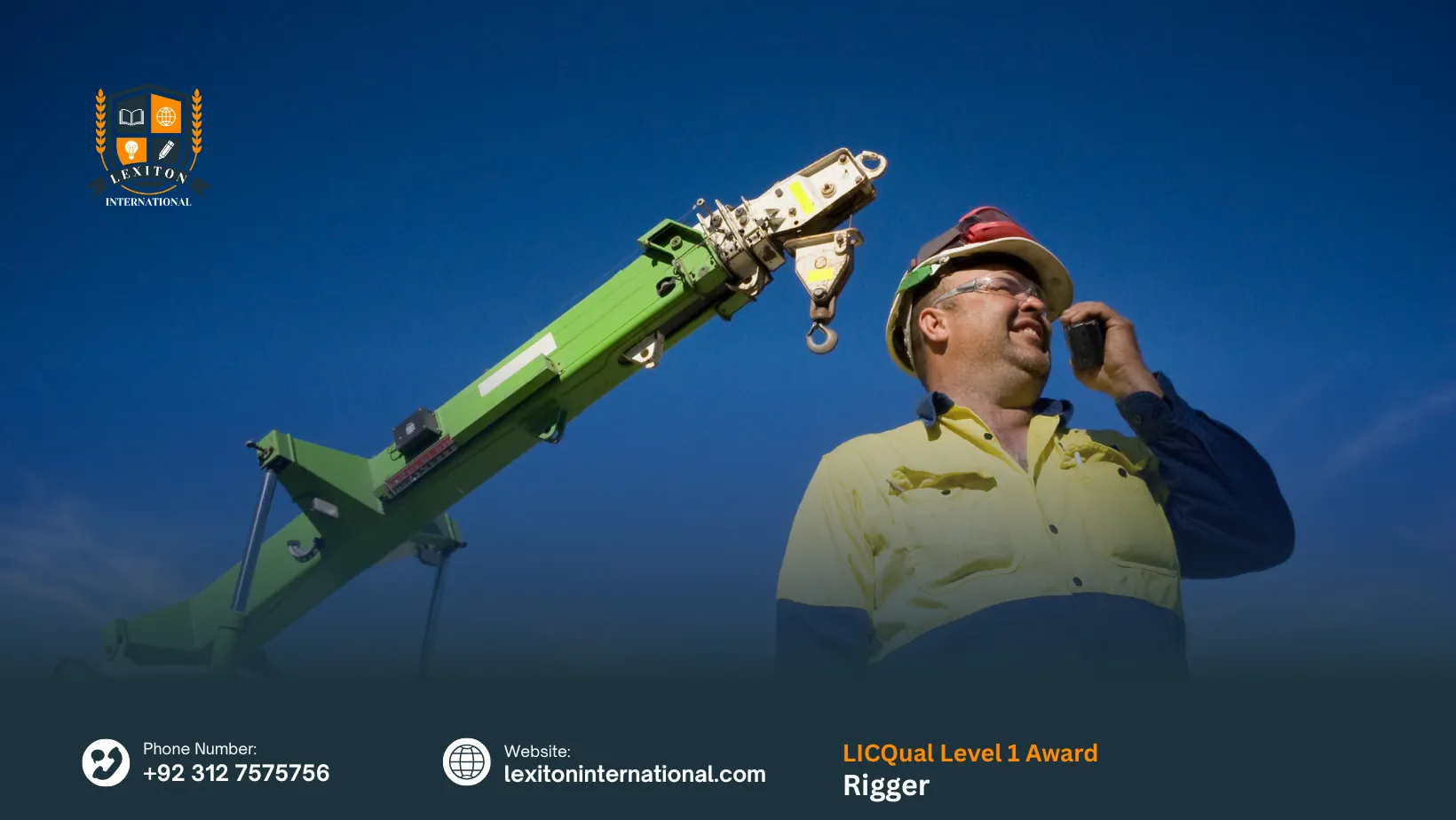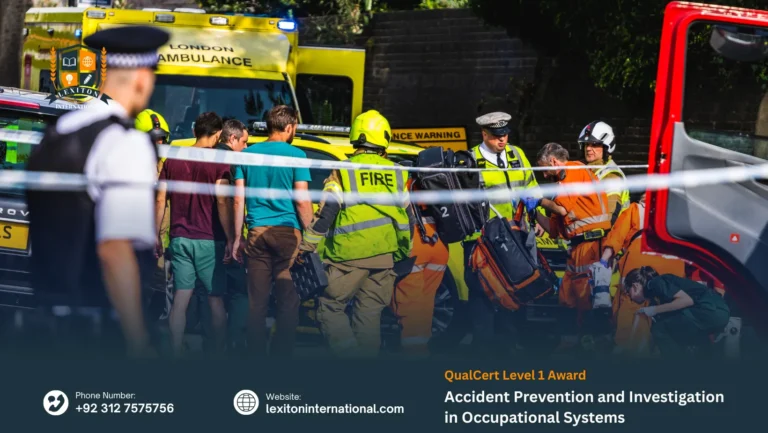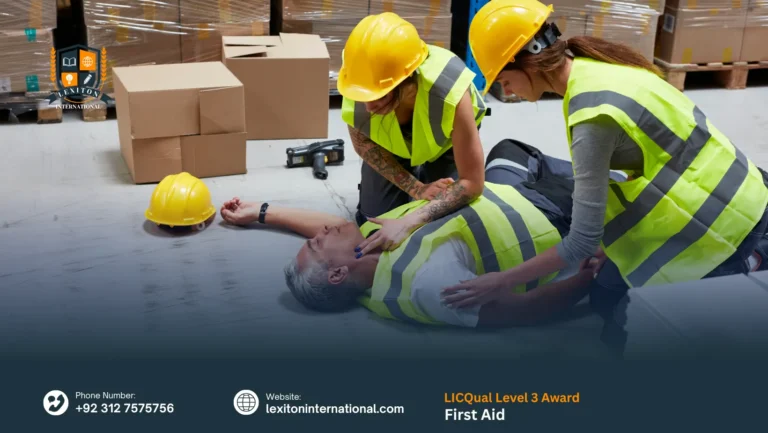The LICQual Level 1 Award in Rigger is an introductory qualification designed for individuals seeking foundational knowledge and practical skills in rigging operations. Rigging plays a critical role in industries such as construction, oil & gas, shipping, and manufacturing, where the safe movement of heavy loads is essential. This course provides learners with a clear understanding of basic rigging principles, equipment handling, and safety protocols, making it an ideal starting point for those entering the field.
Throughout the program, participants are introduced to the responsibilities of a rigger, including the selection and inspection of lifting gear, load estimation, and communication with crane operators. Emphasis is placed on safety awareness, risk identification, and adherence to industry standards. Learners gain hands-on experience in basic rigging tasks, ensuring they are prepared to operate under supervision in real-world environments.
By the end of the course, graduates will be equipped with the essential competencies to support lifting operations safely and effectively. The qualification serves as a stepping stone toward more advanced rigging certifications and opens doors to entry-level roles in construction sites, industrial facilities, and logistics operations. With a focus on safety, precision, and teamwork, the LICQual Level 1 Award in Rigger lays the groundwork for a successful career in the lifting and rigging industry.
To ensure learners gain the maximum value from the Write Entry Requirements for the Given Course, the following entry requirements are recommended:
- Minimum Age Requirement: Candidates should ideally be 18 years or older, as the course may involve professional-level writing concepts, structured documentation, and analytical thinking relevant to academic or workplace settings.
- Educational Background: Applicants should possess a basic understanding of written communication principles or hold a qualification in English, journalism, education, business, or a related discipline. Prior training in technical writing, report preparation, or documentation is highly beneficial.
- Work Experience: While not mandatory, experience in writing, editing, or documentation within academic, corporate, or creative environments is advantageous. Familiarity with formatting standards and structured writing will enhance learning outcomes.
- English Language Proficiency: Learners must have a good command of spoken and written English to interpret course materials, develop structured content, and produce professional-level written documents.
- Professional Interest in Writing and Communication: Candidates should demonstrate a strong interest in writing, documentation, and effective communication. This course is ideal for those aiming to become content writers, technical communicators, educators, or documentation specialists.
- Commitment to Professional Development: As a certification-level program, participants must be prepared for intensive learning, including writing exercises, peer reviews, and formal assessments aligned with professional writing standards.
This course is tailored for individuals ready to enhance their writing skills, produce impactful content, and contribute meaningfully to academic, business, or technical communication fields.
Mandatory Units
This qualification, the LICQual Level 1 Award in Rigger, consists of 6 mandatory units.
By the end of this course, learners will be able to:
Introduction to Rigging
- Understand the role and importance of rigging in various industries.
- Identify different types of rigging tasks and operations.
- Recognize key rigging terminology and principles.
- Demonstrate awareness of the skills required for safe and effective rigging operations.
Basic Rigging Equipment
- Identify and describe common rigging equipment, including slings, hooks, shackles, and pulleys.
- Understand the function and purpose of each piece of rigging equipment.
- Demonstrate the ability to inspect and maintain basic rigging tools to ensure they are safe for use.
- Select the appropriate rigging equipment based on specific lifting tasks.
Basic Lifting Technique
- Demonstrate the proper techniques for lifting and moving loads safely.
- Understand the principles of load balancing, weight distribution, and securing loads.
- Apply correct lifting methods to minimize the risk of injury and damage to equipment.
- Recognize the importance of maintaining control and stability during lifting operations.
Health & Safety in Rigging
- Understand the key health and safety regulations and guidelines for rigging operations.
- Identify potential hazards in the rigging environment and take steps to mitigate risks.
- Demonstrate the use of personal protective equipment (PPE) and safety protocols during rigging tasks.
- Understand the importance of conducting risk assessments and implementing safety measures before, during, and after rigging operations.
Communication and Signaling
- Understand the significance of clear communication and effective signaling in rigging operations.
- Demonstrate the ability to use standard hand signals, verbal instructions, and radio communication during lifting tasks.
- Apply the correct communication procedures to ensure the safety and efficiency of rigging operations.
- Recognize the role of effective communication in preventing accidents and ensuring coordinated teamwork.
Rigging Operations in the Field
- Apply the knowledge and skills learned to carry out basic rigging operations in real-world environments.
- Demonstrate the ability to assess site conditions and select appropriate rigging methods.
- Work effectively as part of a rigging team, following safety procedures and ensuring smooth operation.
- Address challenges and adapt rigging techniques based on environmental factors and specific operational needs.
This course is designed for individuals who are passionate about advancing their skills, gaining professional certification, and contributing meaningfully to their field. Whether you’re entering the industry or seeking to formalize your experience, this program offers valuable insights and practical tools for career growth.
Health and Safety Professionals
- Individuals working in occupational health and safety roles
- Safety officers responsible for implementing workplace safety systems
- Professionals involved in hazard identification and risk mitigation
- Those managing compliance with safety regulations and standards
- Candidates aiming to lead safety audits and inspections
Auditors and Compliance Specialists
- Internal auditors seeking ISO 45001 specialization
- Compliance managers overseeing regulatory adherence
- Professionals conducting internal assessments of safety systems
- Those preparing organizations for third-party audits
- Individuals expanding their auditing credentials
Technical and Operational Leaders
- Engineers and supervisors in safety-critical environments
- Environmental specialists managing workplace health risks
- Team leaders responsible for safety documentation and reporting
- Project managers overseeing risk and compliance programs
- Professionals coordinating cross-functional safety initiatives
Aspiring Lead Auditors and Consultants
- Individuals aiming to become certified ISO 45001 lead auditors
- Safety consultants guiding OHSMS implementation
- Trainers and educators in occupational health and safety
- Professionals interested in international auditing standards
- Candidates committed to continuous improvement and leadership
This course is ideal for learners who are ready to take on advanced responsibilities, lead with confidence, and make a lasting impact in occupational health and safety management.
Completing this course sets the stage for a wide range of professional growth opportunities. Whether you’re aiming to specialize further, take on leadership roles, or expand your qualifications across industries, this certification opens doors to meaningful career advancement.
Progression to Advanced Certifications
- Enroll in higher-level diplomas or lead auditor programs
- Pursue integrated management system certifications (e.g., ISO 9001, ISO 14001)
- Specialize in niche areas like risk management or environmental safety
- Gain eligibility for international safety and compliance credentials
- Build a multi-standard auditing portfolio for global recognition
Career Development and Leadership Roles
- Qualify for roles such as Safety Manager or Compliance Supervisor
- Lead internal audit teams and drive organizational safety culture
- Manage regulatory compliance programs across departments
- Influence strategic decision-making in health and safety governance
- Take on senior advisory roles in corporate or industrial settings
Opportunities in Consultancy and Training
- Offer consultancy services for ISO implementation and auditing
- Conduct workshops and training sessions for safety professionals
- Develop customized audit frameworks for diverse industries
- Support organizations in achieving and maintaining certification
- Establish yourself as a trusted expert in occupational health and safety
Academic and Professional Growth
- Pursue postgraduate studies in safety engineering or risk management
- Participate in global conferences and professional networks
- Publish research or case studies on safety auditing practices
- Collaborate with certification bodies and regulatory agencies
- Stay updated with evolving standards and industry innovations
This course is a powerful stepping stone toward long-term success, empowering you to lead with confidence, expand your expertise, and make a lasting impact in occupational health and safety management.
Curious About This Course?







